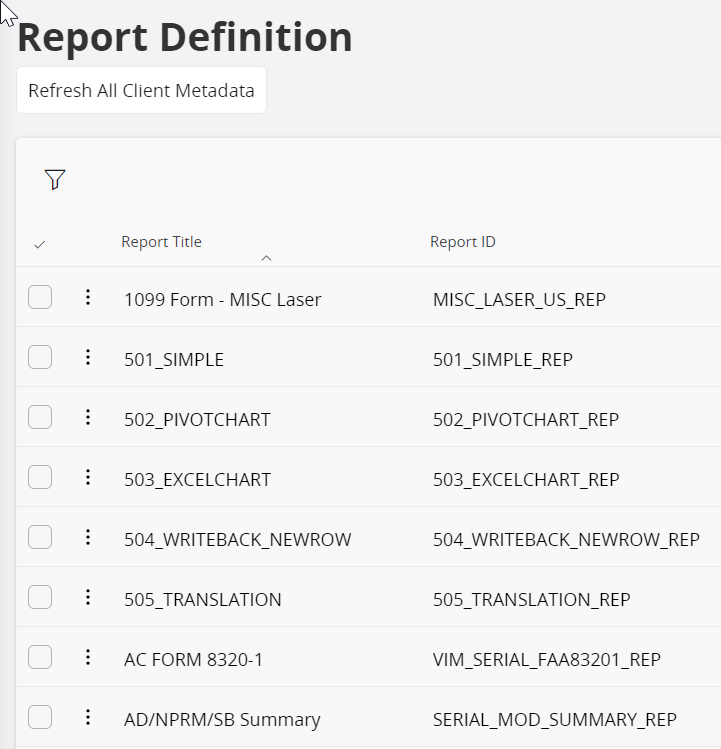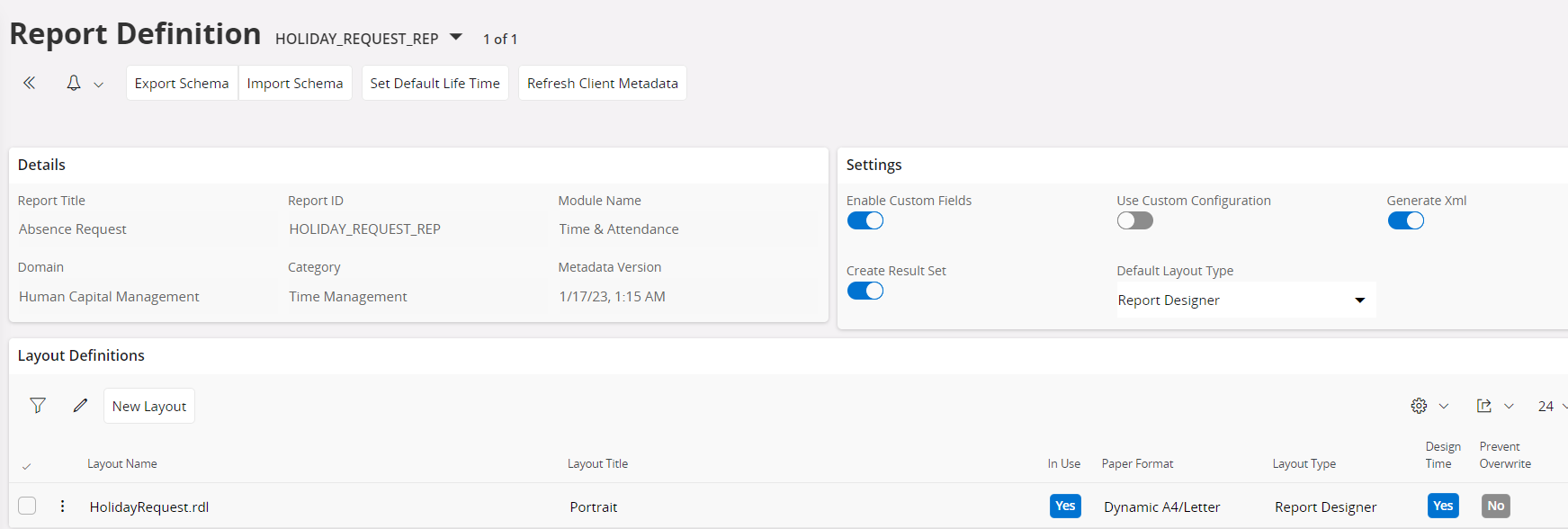Report Definitions¶
Content¶
Overview¶
A Report Definition holds the business logic (i.e. code) to assemble the report data. It also holds a number different property values and characteristics of the report. It is the Report Definition File (.rdf) that holds this information and each operational report in IFS Cloud will have a Report Definition. Often report is used in day-to-day speech, instead of the actual report definition.
The business logic to assemble the report data is implemented in PL/SQL code and the Report Definition share many characteristics with logical units. The translation process of a report is the same as for a logical unit, so is the security and access control. When an operational report is executed a specific method in the report definition is executed. This method assembles the data and stores in format suitable for further processing (i.e. formatting). Access right to the assemble data is given to the user that triggered the report execution and optionally also additional users that should be allowed to access the data. The access control of operation reports is implemented on a data set level, which means that if you are allowed to access the data you are allowed to format in any way.
An operation report can have one or several report layouts. A report layout is a description of how the data should be formatted when printed, previewed or sent as an electronic document. The report layout tool included in IFS Cloud is IFS Report Designer, which produces layouts in the form of .rdl files. As input this tool uses the XML schema (.xsd) that is a description of the XML data structure of the assembled data. The XML schema is connected to the Report Definition - each Report Definition will have a XML schema. The schema and the Report Designer layout are both stored in the database and associated with the report definition. Report Layouts can also be developed in other 3rd party tools like Crystal Reports. 3rd party reporting tools are supported through a plug-in concept in IFS Cloud.
Report Definitions, XML Schemas, as well as Report Designer layouts are all imported by the IFS Installer as part of the installation.
Configure Report Definition¶
The Report Definitions form is where most of the report specific operational report management is done. Read more about the Report Definition concept.
Managing operational reports in IFS Cloud includes management of report layouts as well configuration of the data assembled process.
The Report Definition overview page shows a list of available operational reports in IFS Cloud. This is the entry point for operational report management.
The Refresh Client Metadata option can be used to resolve metadata mismatch errors raised during report execution. Refresh All Client Metadata button in overview page will refresh All the reports. Refresh Client Metadata button can be used after selecting one or more reports.The Report Definition detail page provide the possibility to Refresh the particular report.

Report Designer layouts and schemas are stored and maintained in the database. The Import feature can be found as a Button and supports bulk import of schema - simply specify the folder containing the schemas and they will all be imported and registered with the corresponding reports.
The Report Definition detail page provides the possibility to configure/manage report layouts and the data assembly process.

All report layouts registered for a specific Report Definition are available via this page. It is possible to change layout titles, temporarily deactivate certain layouts (instead of removing them) and so on. New layouts can be added as well. Buttons can be used to import/export report XML schemas and to set a custom default life time for the report. The context menu for individual report layouts is used to import/export report layouts to/from the database. Report Designer layouts (*.rdl), Report Plug-in layouts (*.rpl), StreamServe layouts (*.xsl) and SSRS layouts (*.rpl) can be imported to the database through here.
Enable Custom Fields is an option that can be used to enable/disable custom fields in the report. This will be used in runtime and when designing the layout.
Default Layout Type affects the default layout selection if multiple layouts of multiple types are available. In a multi layout scenario, the layouts will have an enumeration order. There are a coupe of aspects that affect the enumeration order. Only active layouts are considered and there is also a system parameter called Default Paper Format to consider. The layout with the lowest enumeration order of the default layout type and format will be the default one.
Prevent Overwrite is an option that can be used to prevent manually configured/updated layouts from being overwritten in a system update or reconfiguration scenario. With this option set for a layout the IFS Installer will not overwrite the layout even if report layout import is selected as a option in the installer.
This is also where it is possible to override the default data assembly configuration. When data is assembled it can be stored in two different formats XML and/or Result Set. The XML format is the format used by Report Designer layouts and other layout types, while certain plug-ins (like the Crystal Reports plug-in) uses the Result Set format. If a different storage format than the default one is required, this is the place to override it on a report by report level. To change it for all reports, modify the default configuration (system parameters).